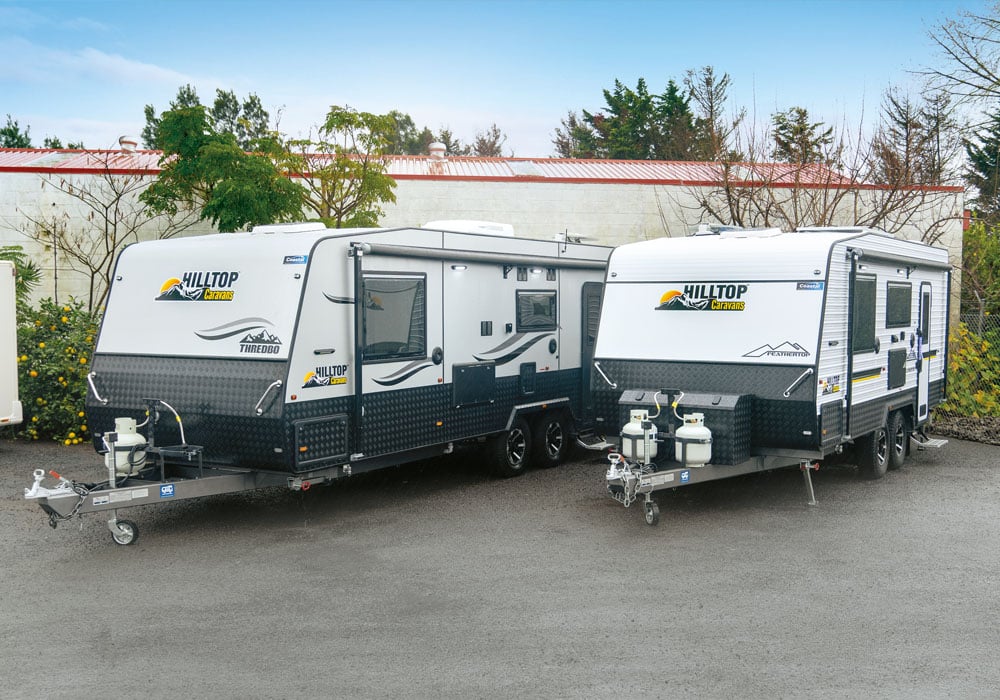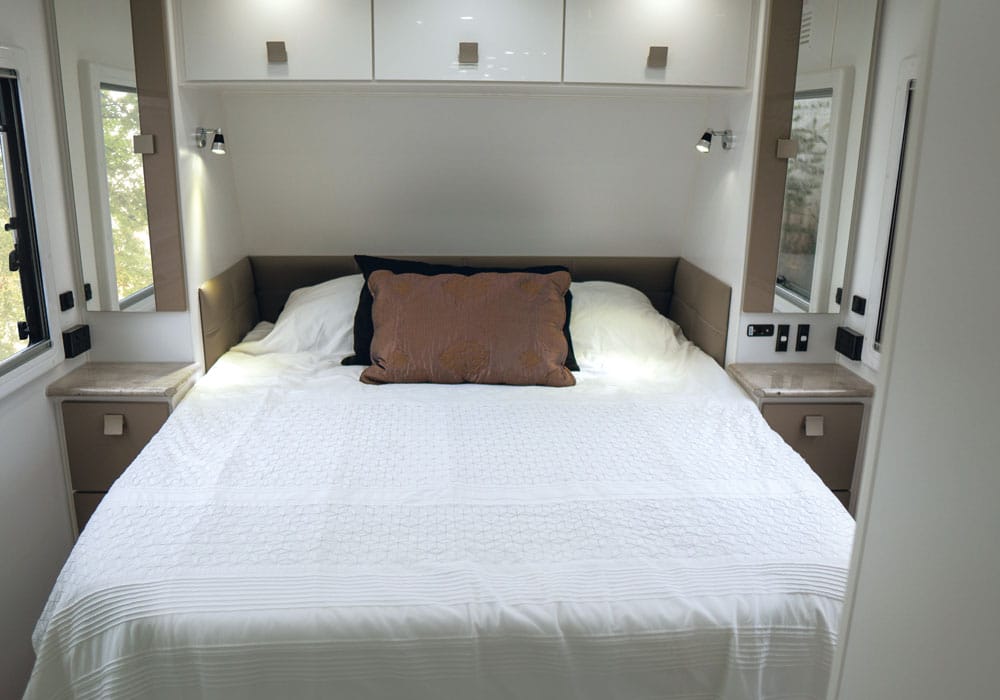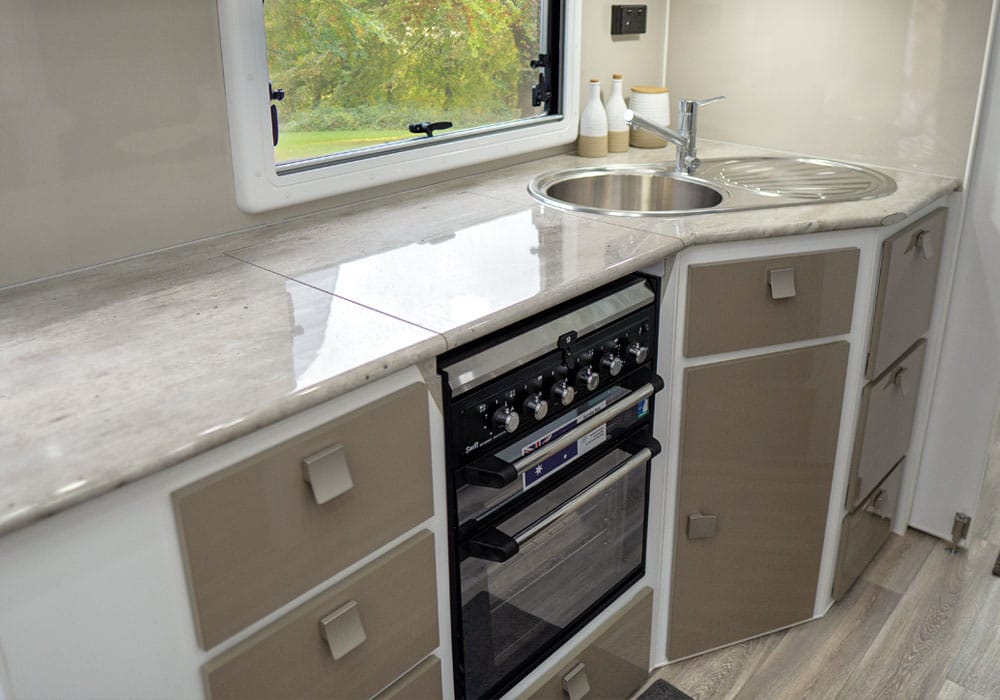Created with quality and ease in mind, Paul Owen finds himself very impressed with the Hilltop range of caravans from Coastal Caravans in Whakatāne.
Australia’s proximity to the tropical rainforest trees of South-East Asia has a profound influence on the caravans made in ‘the lucky country’. These forests are populated with trees of the Shorea genus, and several species of these huge Dipterocarps grow nearly 90 metres tall and provide a light yet ultra-strong hardwood timber collectively known as meranti when felled and milled.
Easy to work, meranti timber has been the cornerstone of Australian caravan and furniture manufacturing for almost a century and continues to be the go-to framing material when building caravans tough enough to handle Australia’s roughest roads. There are three good reasons Aussie caravan builders look to this wood for their framing: weight, flexibility and strength. In the same way that timber-framed buildings can better withstand earthquakes than their reinforced concrete counterparts, a meranti framed caravan is more likely to endure the rigours of rough road travel than their metal/composite hybrid equivalents.
There possibly isn’t a better way to build a caravan than with a meranti timber frame if durability is the main priority. The only reason not to build a caravan out of meranti for Australasian roads is the obvious one – of the 196 species found in the Shorea genus, 148 are now listed as endangered. So, let’s hope that the remaining 48 Shorea species that aren’t endangered are being harvested in a sustainable way, for the loss of meranti as a source of framing material would be calamitous for Aussie caravan makers.
That a meranti hardwood frame is still regarded as the best option for building a stable and strong caravan structure that is virtually rough road-proof is what attracted Whakātane brother and sister business partners, Paul and Toni Farrell, to distribute and sell Hilltop Caravans in New Zealand. The Farrells own and run Coastal Caravans from a large site on the western outskirts of Whakātane, after their father, Mike, kicked off the business 21 years ago. With decades of refurbishing secondhand caravans to get them ready for sale under his belt, Paul has formed a firm opinion on which nation makes the caravans that are most suited to towing over Australasian roads.
“When we went looking for a franchise to sell new caravans, we knew from 20 years of selling secondhand vans that it had to be for an Australian brand,” he says. “The reasons are two-fold – Australians and New Zealanders are looking for things that last and that are serviceable over long periods of ownership. Then there’s the roads of both countries and the way they affect caravans.
“Australia is a unique country – half the roads there are unpaved, and caravans can be towed along beaches and through huge depressions full of ‘bulldust’ at times. Australian caravans therefore must be built super-tough and offer more ground clearance than others. In New Zealand our roads are pretty rough as well and we’ve seen lots of caravans coming in here that are falling apart. We wanted to sell caravans that last, and back them up with good parts support and service.”
True blue construction
The Farrells recently took on the Hilltop franchise after extensive research of the Australian caravan industry. “The brand has been going for eight years, and they have quickly established a reputation for durability and quality,” explains Paul. “We visited their factory in Somerville, in Victoria, and found that their business had a similar culture to ours; they were as excited about us becoming their New Zealand distributor as we were about taking them on. They appreciated that we had been in the business for a long time and could support us with improved access to their caravans.”
Hilltop builds between one and three caravans per day, all with meranti timber framing mounted on top of a RHS (rectangular hollow section) chassis made with rolled steel varying in thickness from 3mm to 5mm according to the size and weight of the destination caravan. The source steel is from two Australian mills, and it is then made into a chassis by Melbourne firm FP, whose owner, Frank Pannella, is proud to call his caravan chassis “the most over-engineered on the market”. Usually, this ultra-strong structure is painted, although extra hot-dip galvanising is offered as an option.
The axles and suspension are all sourced from Australian companies, with the iconic NP Hauffe and Co providing the outback-proof axles they’ve been making since 1975. There are three suspension setup options, giving buyers the choice of beam-axle rocker and roller suspension from the Australian arm of Al-Ko, a compact independent progressive coil spring and shock absorber layout aptly named Simplicity Axles, or Cruisemaster’s highly-regarded ATX independent all-terrain suspension with the choice of either air or coil springs.
Hilltop Caravan buyers get a choice of exterior side wall cladding for the meranti frame – either composite or lighter rippled aluminum. Smooth aluminum clads the front and rear exterior walls of all Hilltops, and the gaps between the exterior and interior walls in the framing are filled with insulation. Paul Farrell says that Kiwis who have placed orders for Hilltops are split 50:50 in their preference for one cladding over the other. He’s also proud that not a single piece of ABS plastic is used in the construction of a Hilltop. “Hilltop uses plenty of checker-plate alloy to protect vulnerable areas instead, and even the wheel arches and mudguards are solid metal,” he explains.
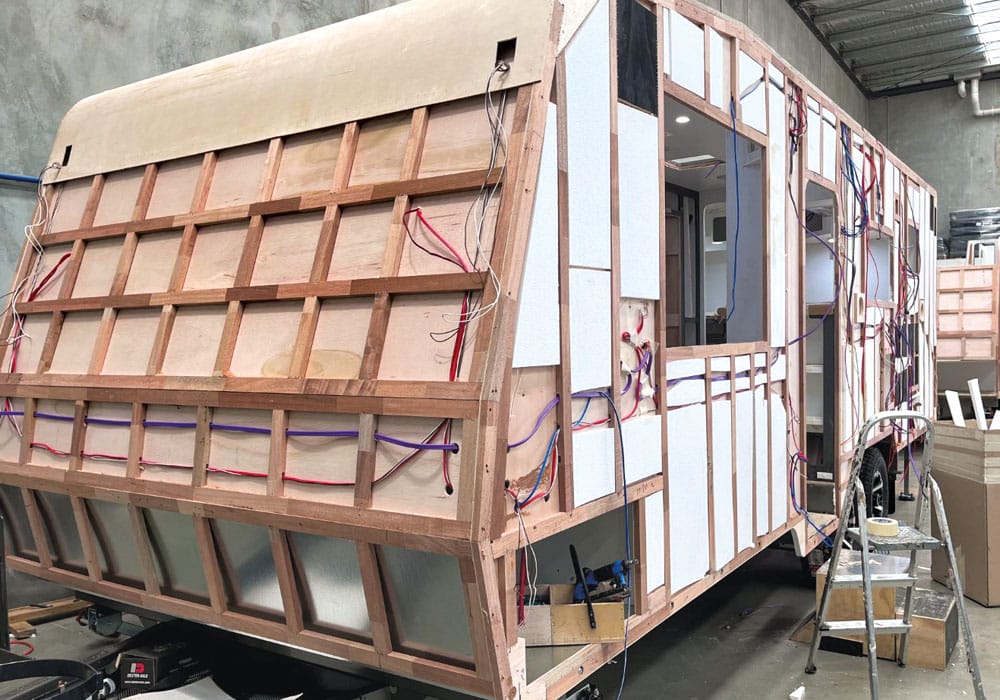
First Arrivals
Two tandem-axle caravans are the first Hilltops to arrive at Coastal: the Feathertop, from $93,000, with a 5.94m long cabin; and the Thredbo, from $122,000 with a 6.88m long cabin (both length measurements are taken outside to outside). These are harbingers for a wider range of Hilltops to follow, and the next to arrive is the yet to be priced Grampian. Think of something Thredbo sized with a larger bathroom, and you’ve got a good handle on that one. Coastal’s new Hilltops will also offer more family-friendly models with cabins of more than seven metres in length and a stack of bunks, either double- or triple-decked. Meanwhile, although the Thredbo and Feathertop are aimed at couples with their spacious double bedrooms, their lounge seating and telescopic table can be quickly converted into a bed if required.
Hop inside the Feathertop
You step inside the Feathertop via a door that’s located towards the rear of the left side. You then take a couple of steps in after first using the external step (either pull-out manual or optional powered slide-out), and turning right accesses the rear washroom, which comes complete with separate shower and toilet, and
a washing machine. Turning left, you’re greeted by the kitchen/lounge area, followed by the main bed area.
The Feathertop I reviewed had a booth-like lounge with face-to-face seating; however the optional L-shaped lounge is possibly a better choice if seeking a bed conversion that’s a bit longer in length.
The Feathertop may be an entry point to the Hilltop range (it’s also available as a shorter single-axle caravan), but it certainly doesn’t look or feel it. There is commendable attention to detail to be found all over this model.
There’s a wealth of LED lighting and beautifully crafted cupboards, overhead lockers, drawers and joinery – and, thank goodness, plenty of plugs located in strategic positions too.
The longitudinally laid out kitchen means that everything is at hand and there’s no need to spin 180° to access the Thetford or Dometic three-way fridge. The doors on the overhead lockers have hinges running along their entire length, and the oven/hob has a flip-up/pull-down top that seamlessly extends bench space as it’s made from the same faux-marble material.
The unladen mass of the Feathertop is 2280kg, while the gross vehicle mass is 3190kg, giving a generous payload of 910kg. With the ability to cart lots of stuff, it all adds up to a compelling sales proposition when it comes to wheel estate for your bucks – more than 19 feet of luxuriously furnished cabin for less than 90 grand! Where do I sign?
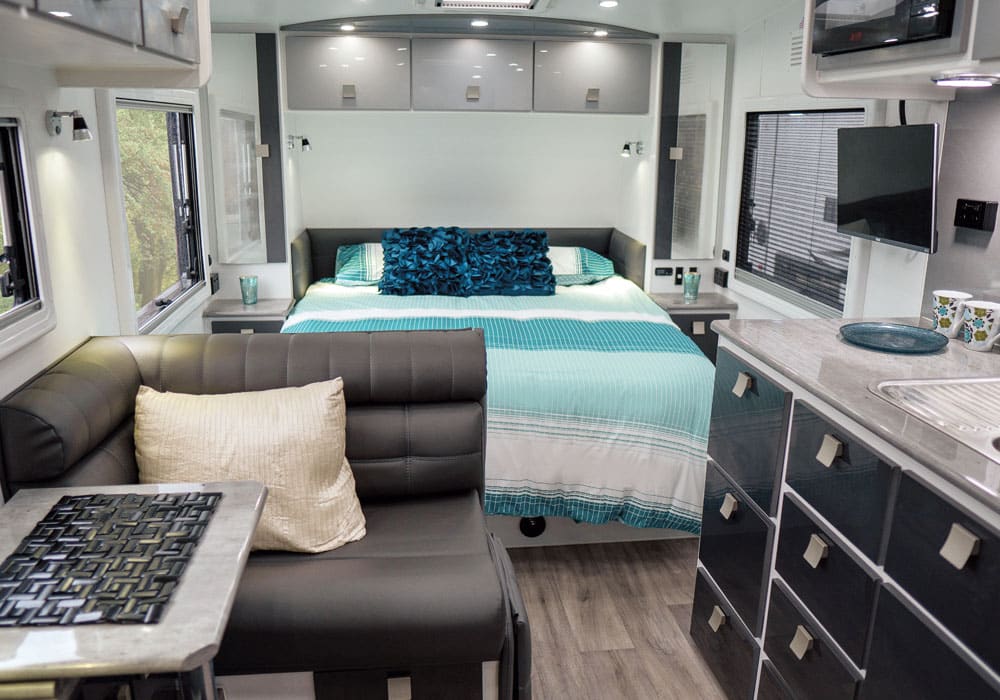
Stretch out in a Thredbo
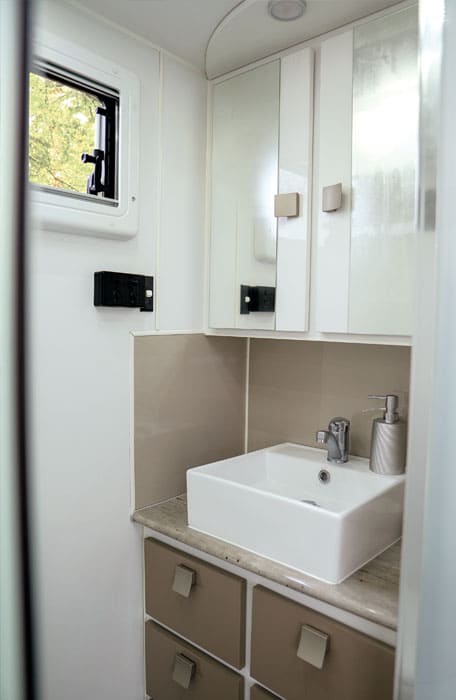
Although the Feathertop doesn’t feel short of space, if you need more, the Thredbo is happy to provide it. The larger Hilltop donates most of its 900mm of extra length to providing a larger bathroom located in the middle of the caravan, complete with a separate shower cubicle on one side, and a more generous washroom on the other.
A door separates these personal areas and main bedroom from the living space of the Thredbo, and if privacy is a biggie for you, this Hilltop is a better choice than the more open-plan Feathertop.
Ditto, choose the Thredbo if seeking to socialise with more people inside your caravan. The U-shaped lounge at the rear of this Hilltop is huge and large enough to rival the rear lounges once found on Luton-bodied, Kiwi-made rental motorhomes of the previous decade. Like the latter, the Thredbo gives the opportunity to park somewhere scenic and enjoy the view on three sides of the caravan from the lounge seating through the generously sized windows. The table also periscopes down to complete a base for a more spacious secondary bed than the Feathertop’s. Where the latter is either a marginal four-berth caravan or a spacious three-berth depending on the size of the secondary bed occupants, the Thredbo is the full-fat four-berth. It weighs in without load at 2700kg, while the gross vehicle mass limit just sneaks under the 3500kg mark at 3490kg, allowing a maximum payload of 790kg.

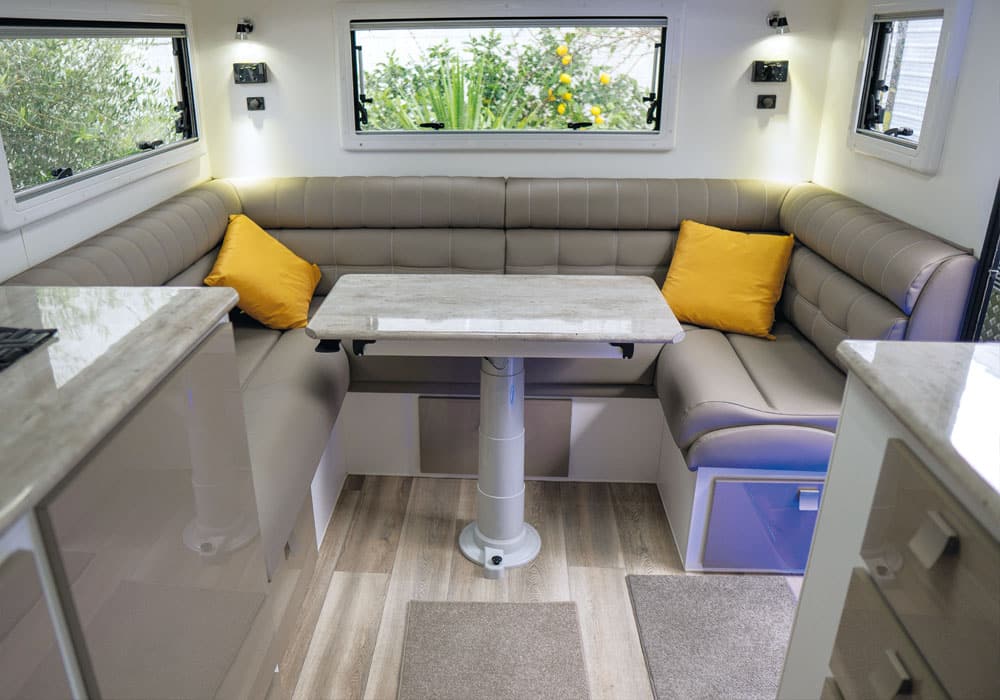
Ready to go Wild
The Hilltops might have model names taken from Australia’s mountains, but the Farrells have been able to tweak the specifications to suit Kiwi camping preferences. Diesel heaters are included, fed from a tank located handily on the rear bumper bar alongside a spare wheel. NZ-bound Hilltops also get an extra 120Ah battery coupled to the one that comes standard in Australia, and both are topped up by a 160w solar panel and 30amp battery charger. There’s also a RSC automatic satellite dish and two 24” TVs for the Thredbo and a single 24” TV for the Feathertop. With twin 95L freshwater tanks, 110L greywater reservoir, and a 25L hot water system for the Feathertop and a 28L system for the Thredbo, plus twin 9kg gas bottles mounted on drawbar, the Hilltops are ready to go wild.
The prices include full self-containment certification, as the Farrells want to ensure that there are no extra costs to pay after their customers pick up their vans.
For more information, visit https://www.coastalmotorhomes.co.nz/hilltop-caravans
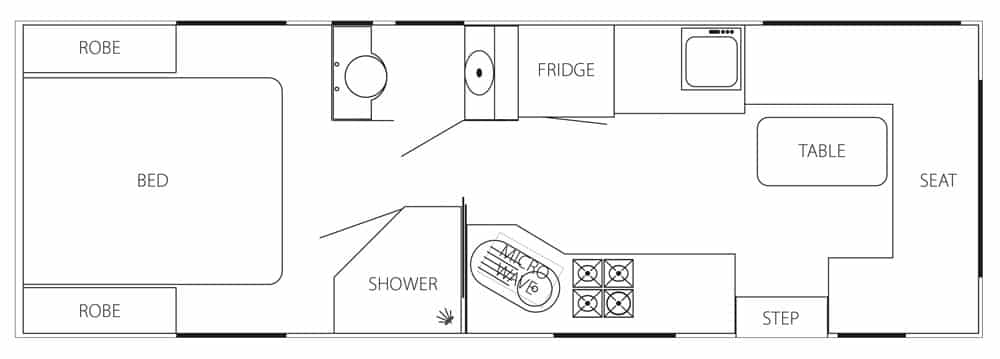
| SPECIFICATIONS | |
|---|---|
| MAKE & MODEL: | Hilltop Thredbo |
| CABIN DIMENSIONS: | 6.88m L with 1.98m head room |
| CHASSIS: | Heavy-duty FP steel trailer with electric brakes |
| BERTHS: | 4 |
| FRESH/GREY WATER: | Fresh 190L/Grey 110L |
| UNLADEN MASS: | 2700kg |
| GVM: | 3490kg |
| PAYLOAD: | 790kg |
| PRICE: | $122,000 |

